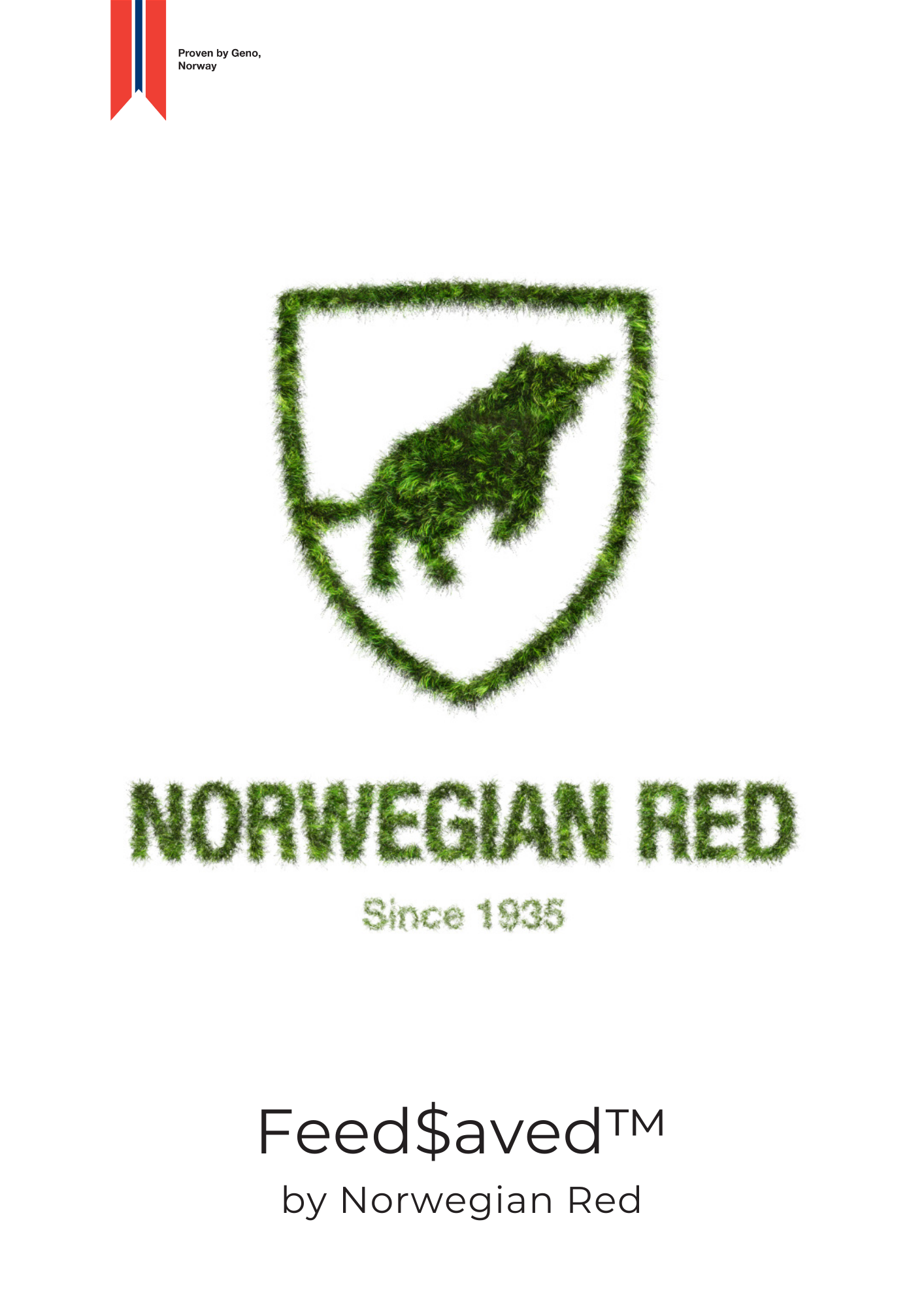Our goal is to further develop the Norwegian Red breed as the most profitable and sustainable dairy breed in the world. Improving feed efficiency is one step towards both.
What is Feed$aved™?
Feed$aved™ is a trait that has been carefully developed to help global customers select for reduced feed intake. Norwegian Red's Feed$aved is a tool for selecting Norwegian Red (NR) sires with lower dry matter intake (DMI) requirements. Selection for higher production and Feed$aved will result in lower DMI without reducing milk value and in more efficient use of feed.
The Feed$aved trait reflects the feed requirement for body weight maintenance and is based on mature body weight in daughters of NR sires.
Improving feed efficiency
Feed costs have a huge impact on profitability for dairy producers. Improving feed efficiency will reduce the cost of overall production and increase profit, while at the same time contributing to a sustainable global dairy production.
One step towards improving feed efficiency is to reduce the feed required for maintenance of body weight. Selecting lower body weight will subsequently reduce the feed needed for regular maintenance of routine body function.
Breeding for feed efficiency requires a substantial amount of reliable data. Norwegian Red's comprehensive data collection and recording system today includes 93% of all cows in Norway. Cow weights from 1.2 million cows ensures high accuracy when selecting for Feed$aved.
Keeping milk value while reducing feed cost
Crossbreeding with Norwegian Red could save you up to $101*, £74, or €83 per cow per year when using top Norwegian Red bulls, due to lower feed costs. This is without compromising milk value. Now you can increase savings even further with Feed$aved.
The benefits of Feed$aved™ in 1-2-3
1. The average mature Norwegian Red weighs about 1,342 pounds / 610kg. The average mature Holstein weighs about 1,540 pounds / 700kg. Small cows require less feed to maintain their body weight, so they eat less. Norwegian Red x Holstein daughters of the best Norwegian Red bulls for Feed$aved will consume about 2.3 pounds or 1 kg less dry matter per day. The average will eat about 1.4 pound or 0,6kg less.
2. Data shows that NR x Holstein crossbreds produce within +/- 1-2% of their purebred Holstein herdmates for fat and protein and +/- 5-6% for milk volume. This maintained milk value coupled with reduced feed costs of $63, £ 47, or € 53 per cow per year on average, and up to $101, £74, or €83 for top bulls, will contribute to a significant increase in profits.
3. Small cows that eat less and produce similar value of milk are money makers!
Where do I find Feed$aved?
The information is now avaliable In the Norwegian Red sire catalogue on each individual sire detail page.
The future of feed efficiency for Norwegian Red
"We are constantly improving our genetic material to suit your current and future needs. By investing heavily in actual feed intake recordings on Norwegian Red, selecting the most feed efficient cow with the highest possible precision will become possible. Geno has also started measuring and monitoring methane emissions on Norwegian Red cows, not only on dairy units but also in our young bull testing station. Our goal is to develop a full Feed Efficiency Index that lets you breed for a more feed and energy efficient cow. This leaves you with a lower-emission herd that increases profitability even more." - Håvard Tajet, Chief Technology and Innovation Officer.
